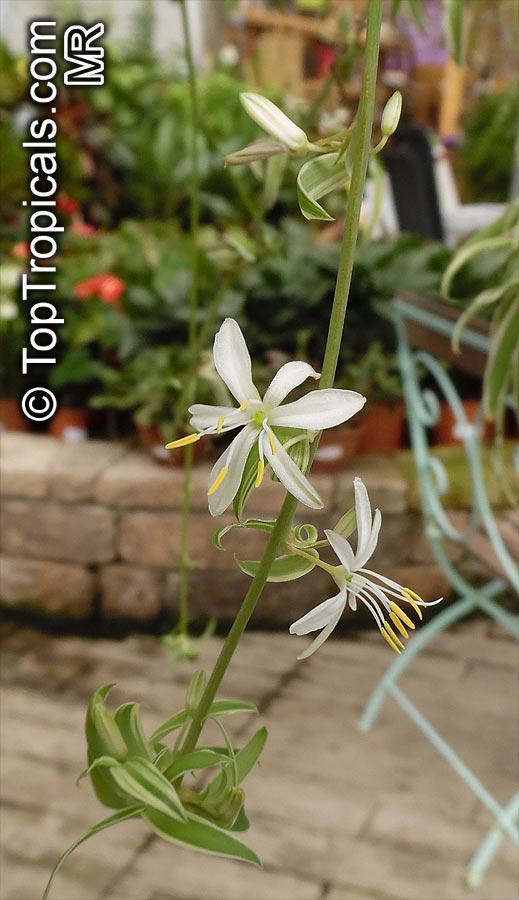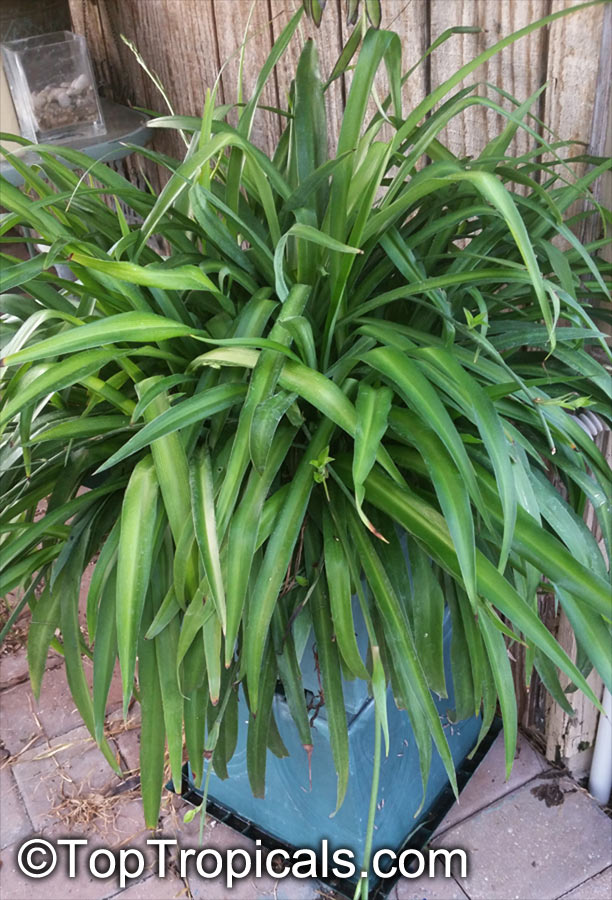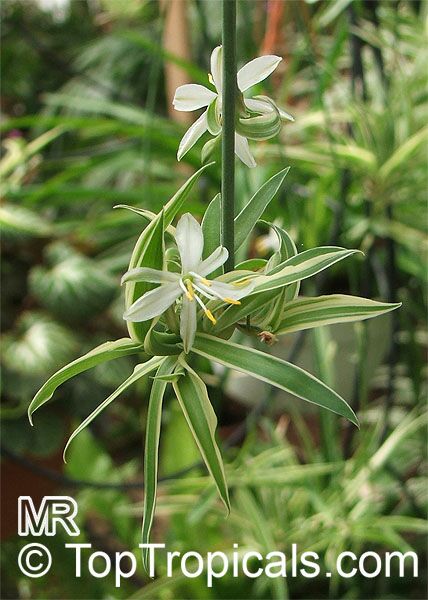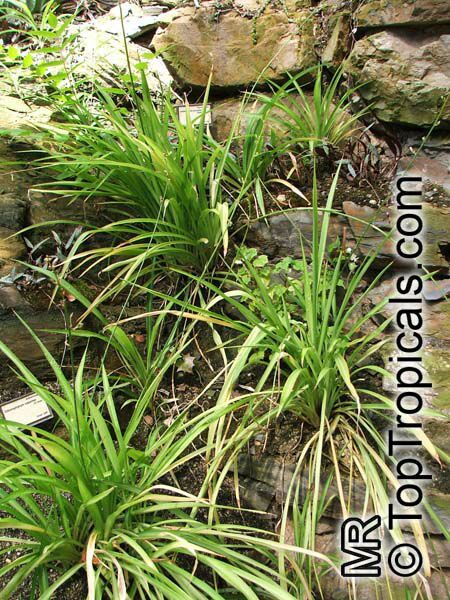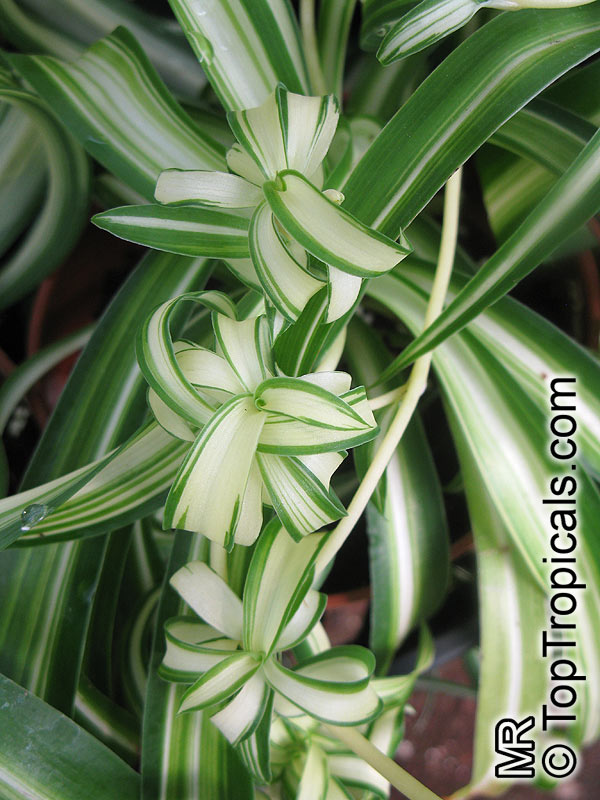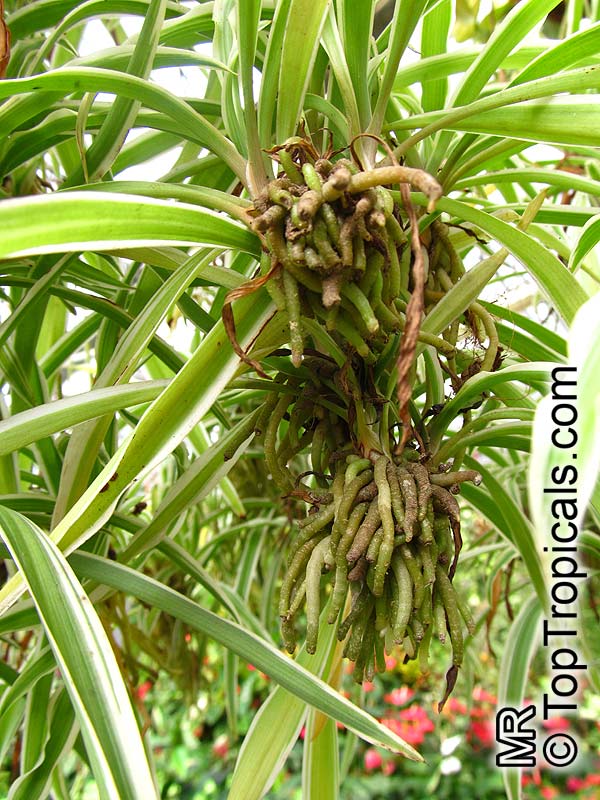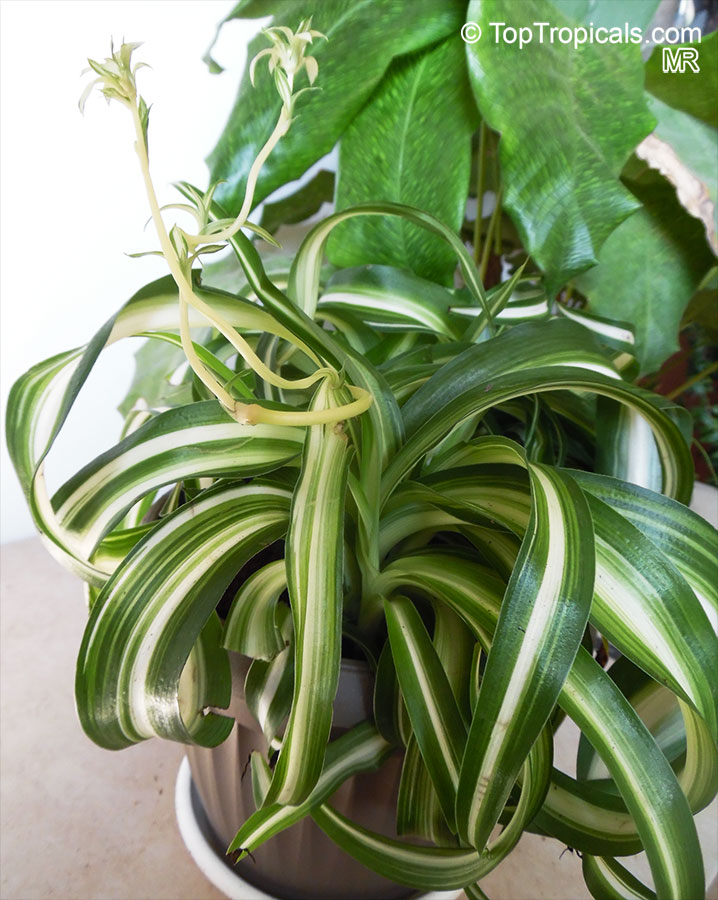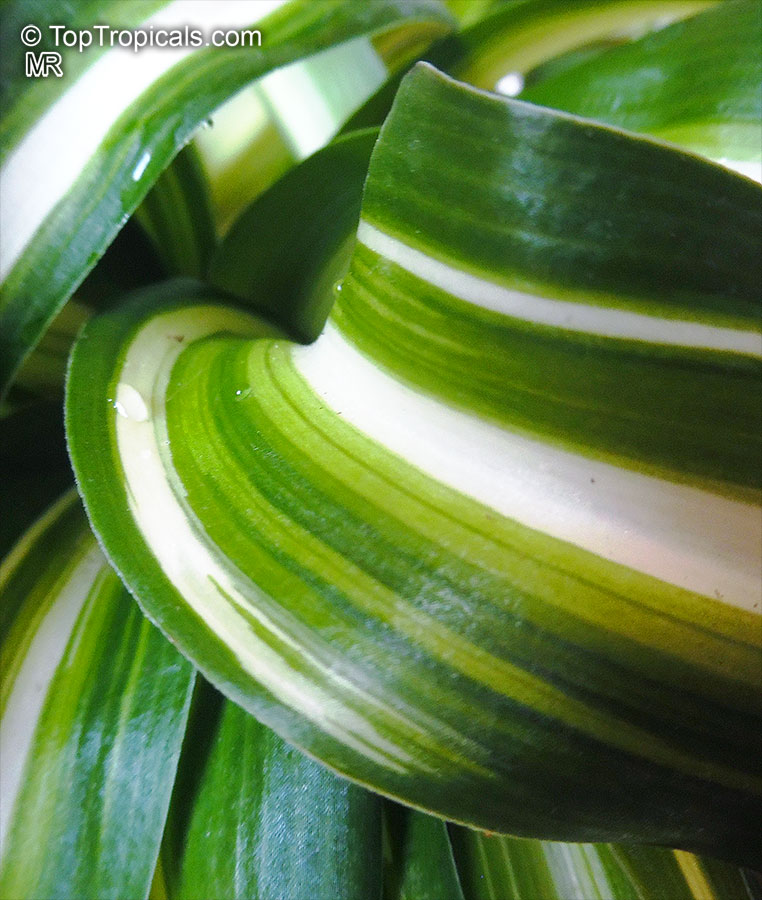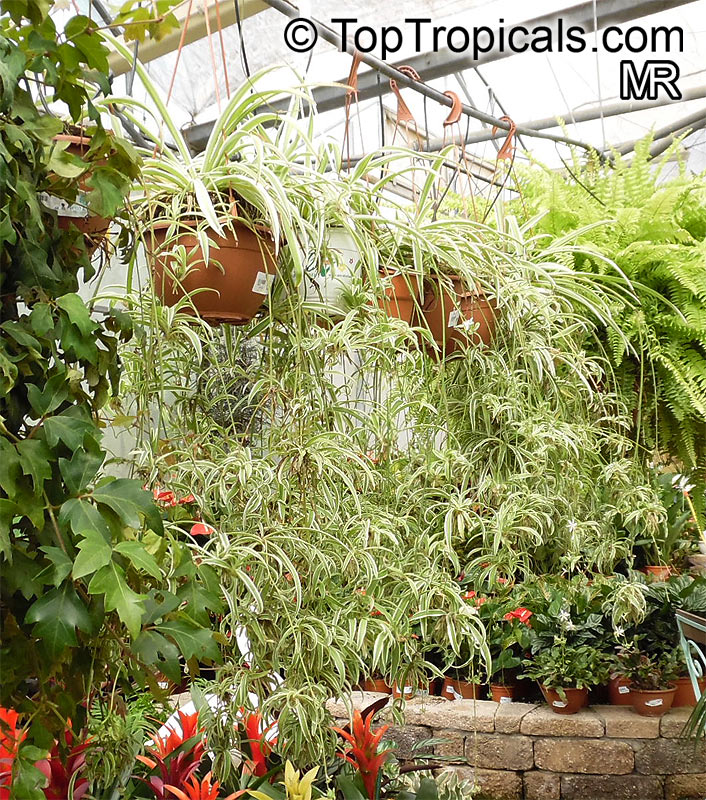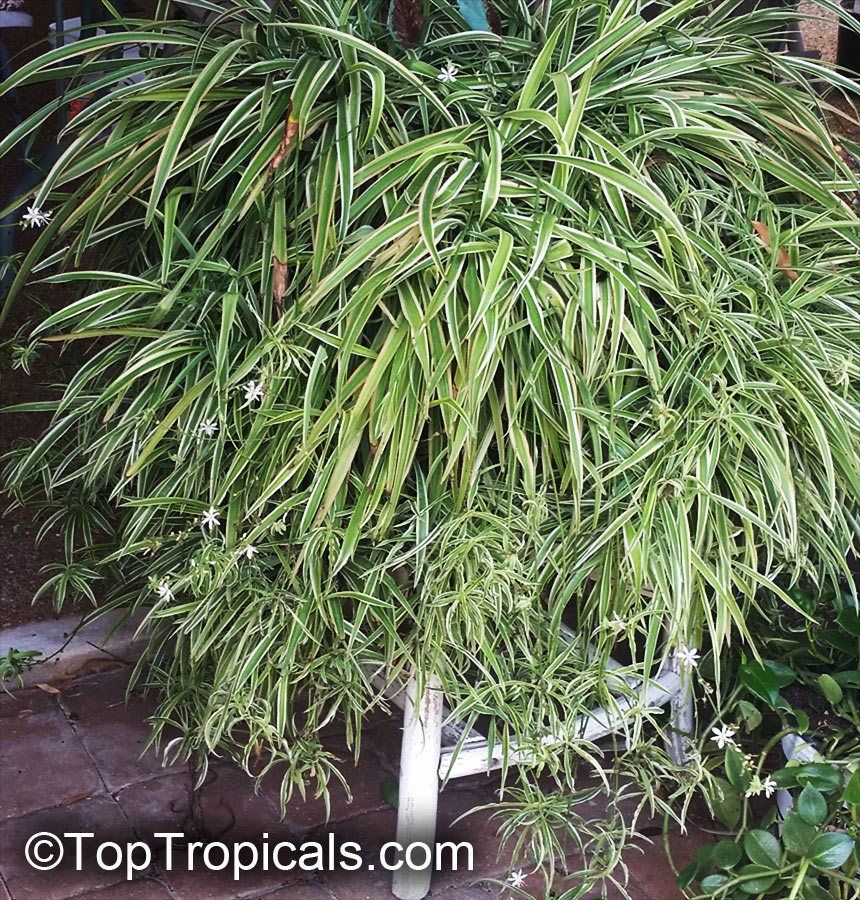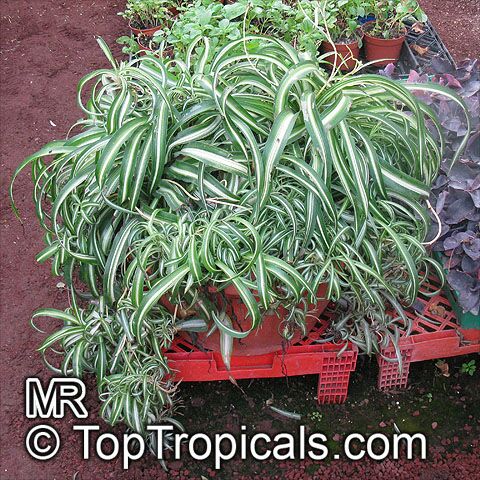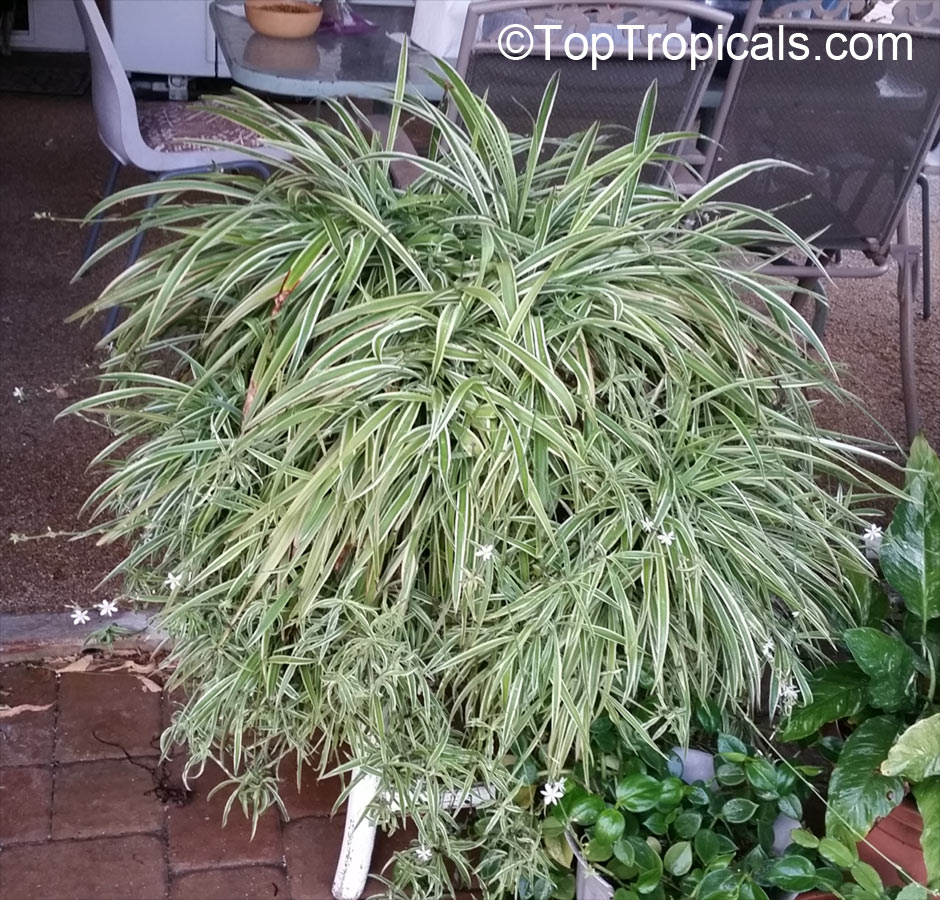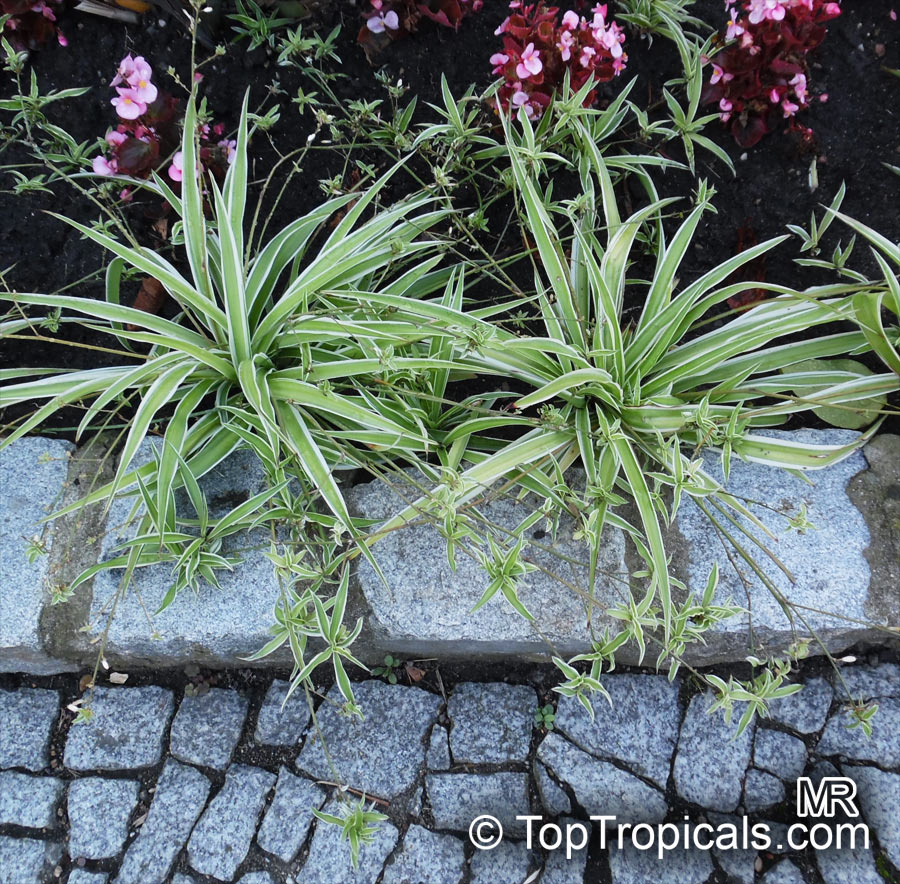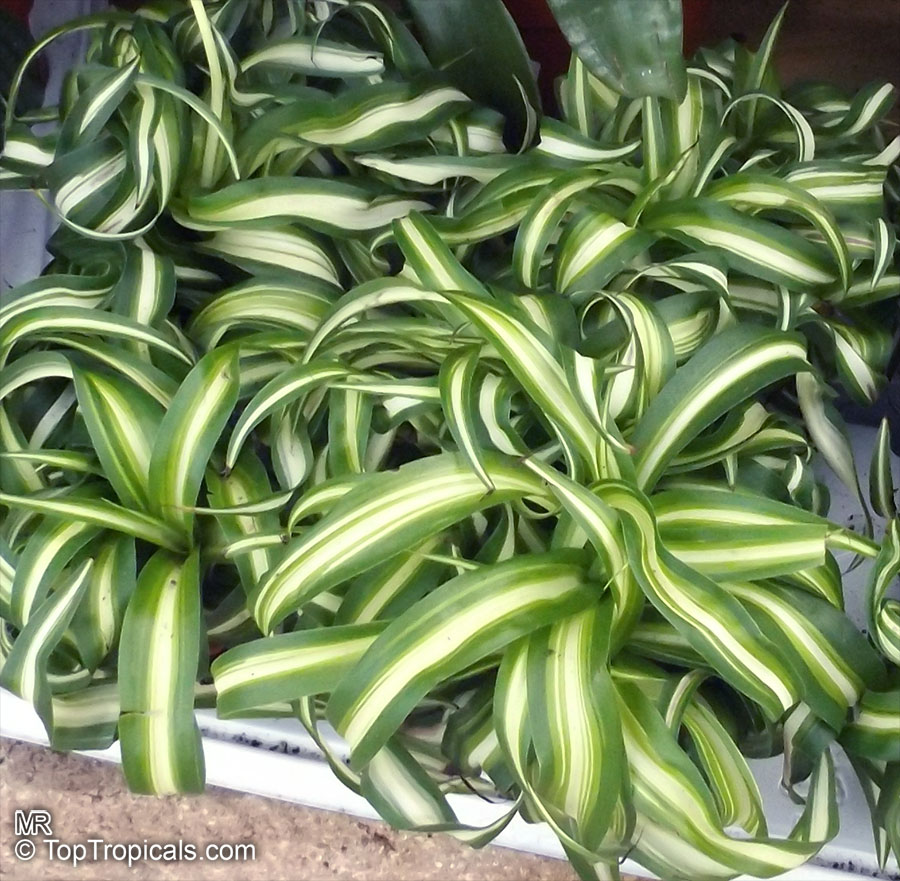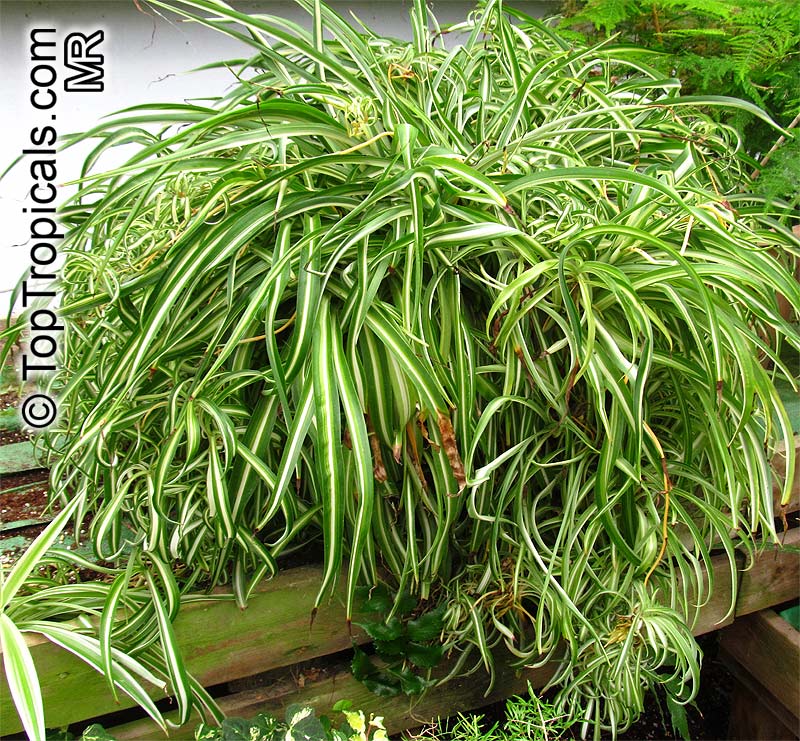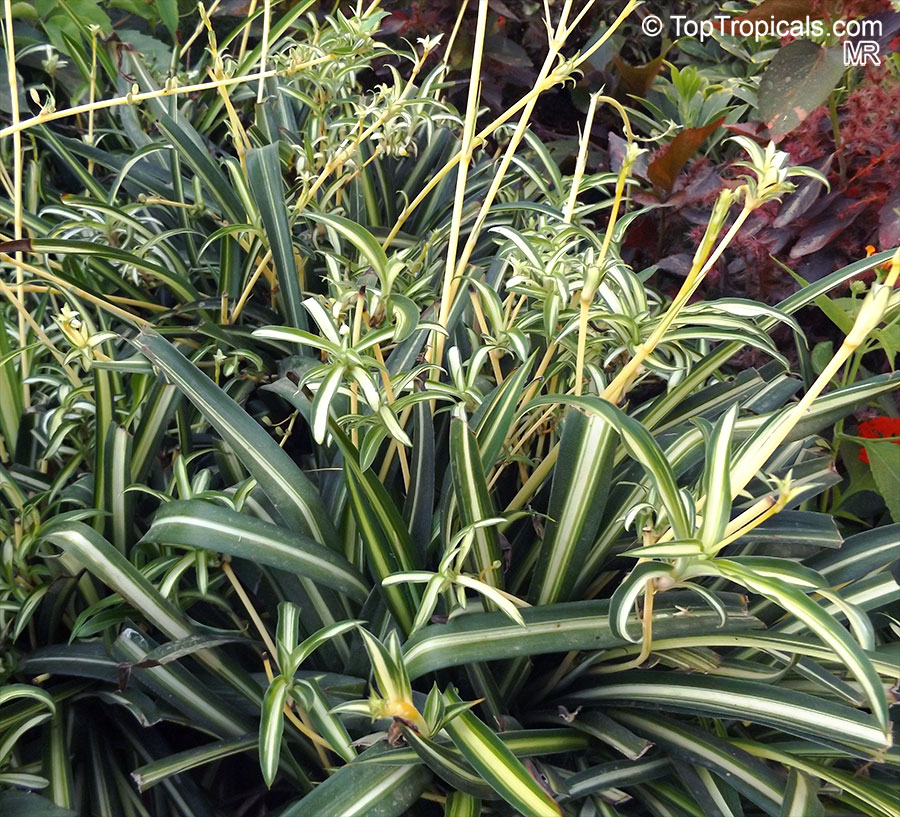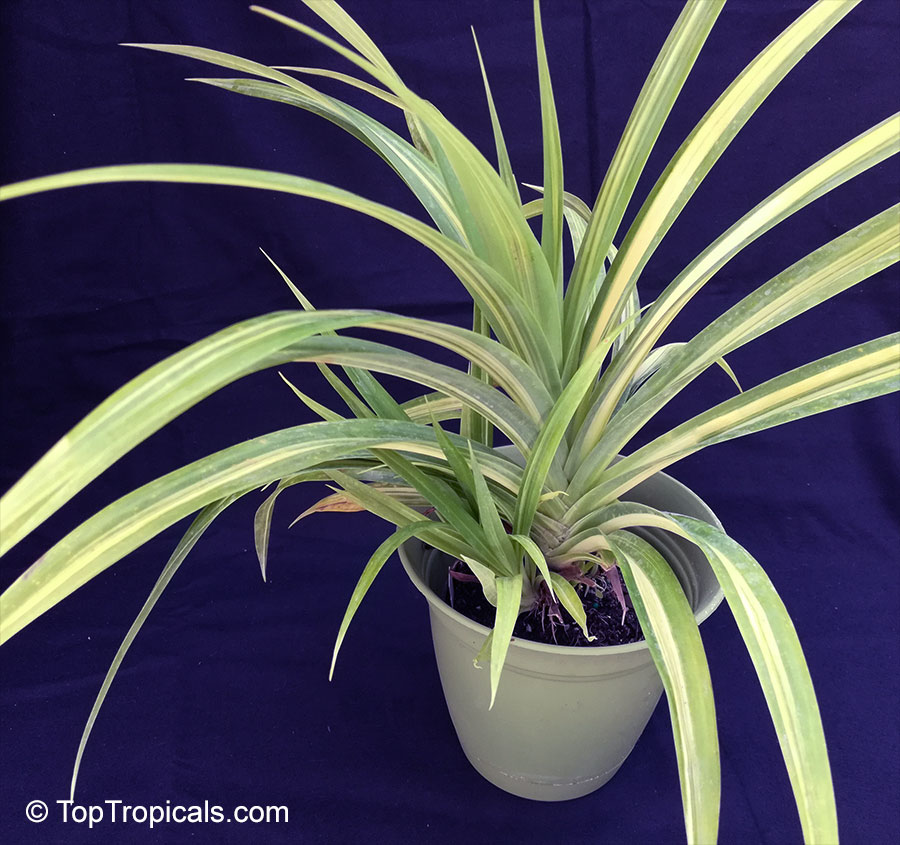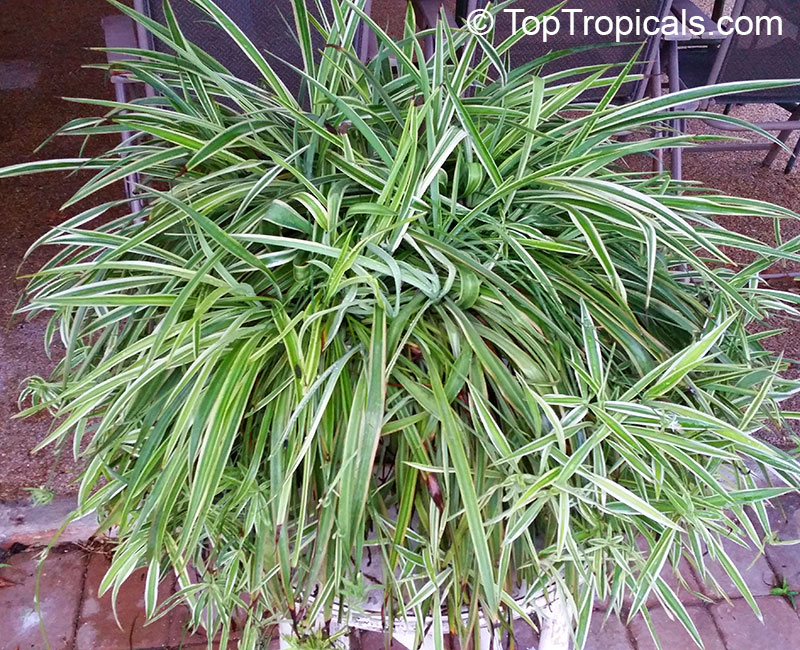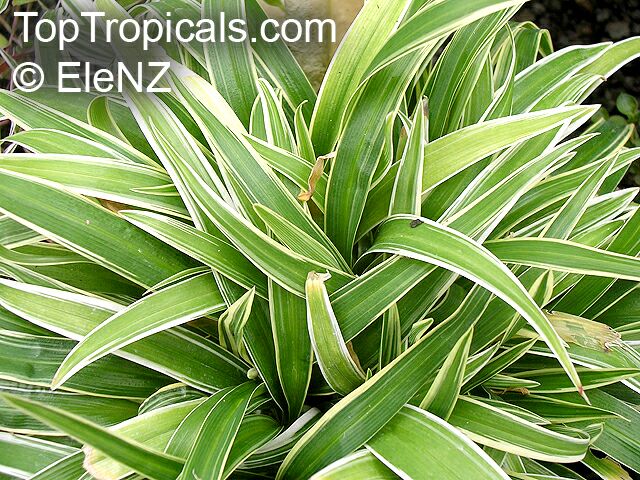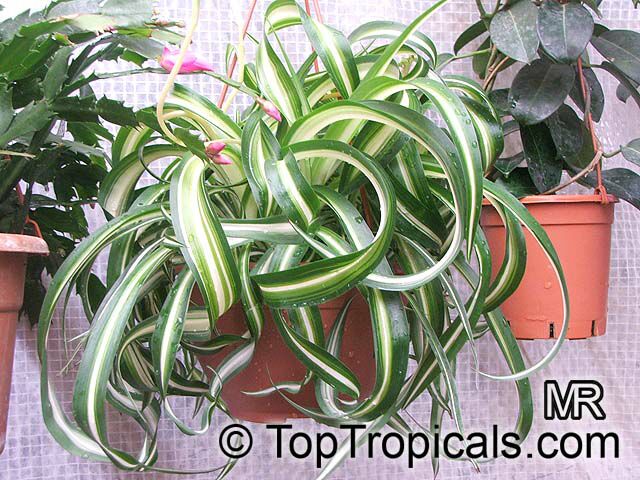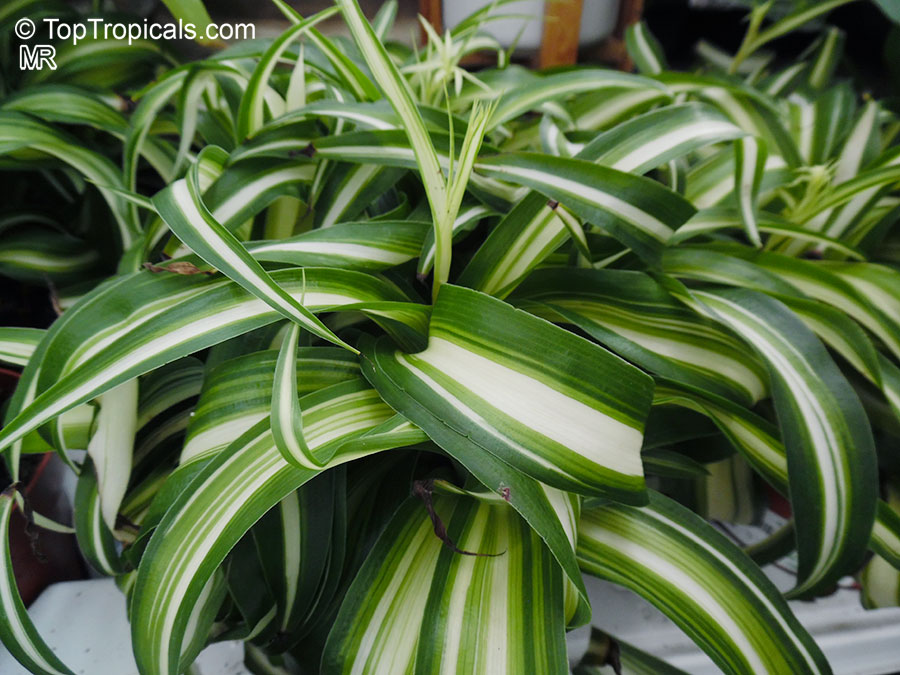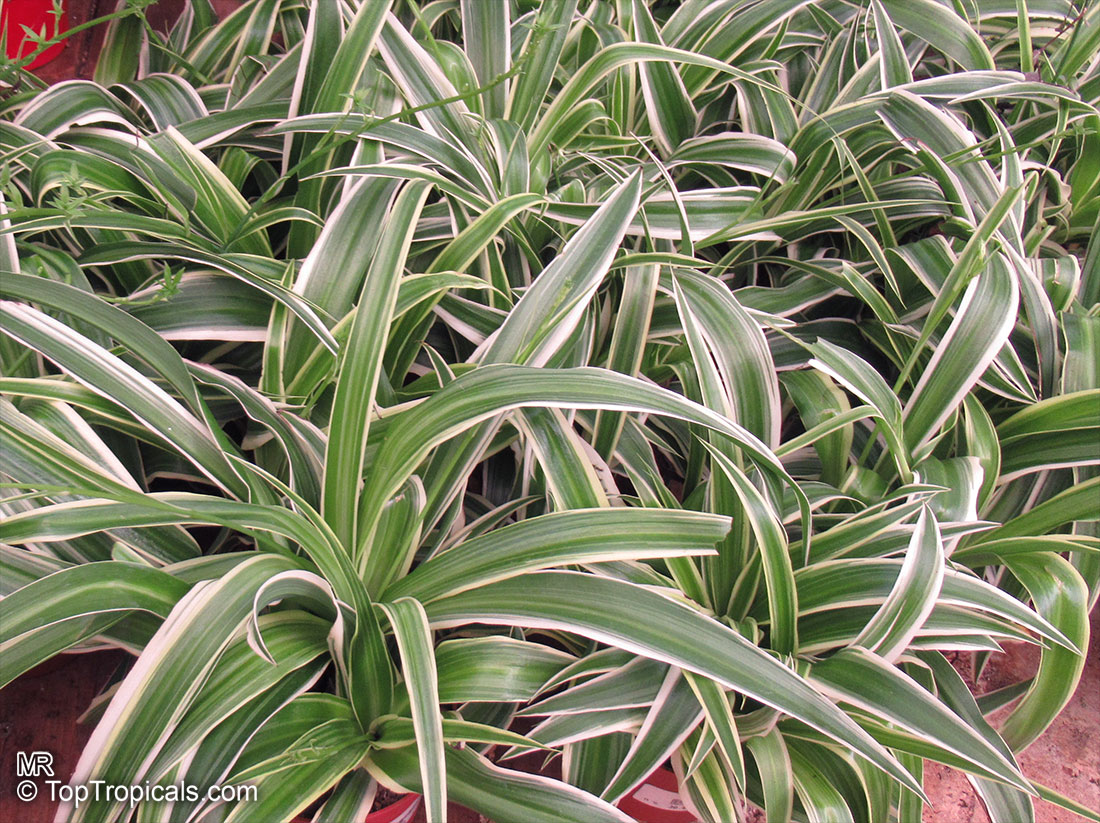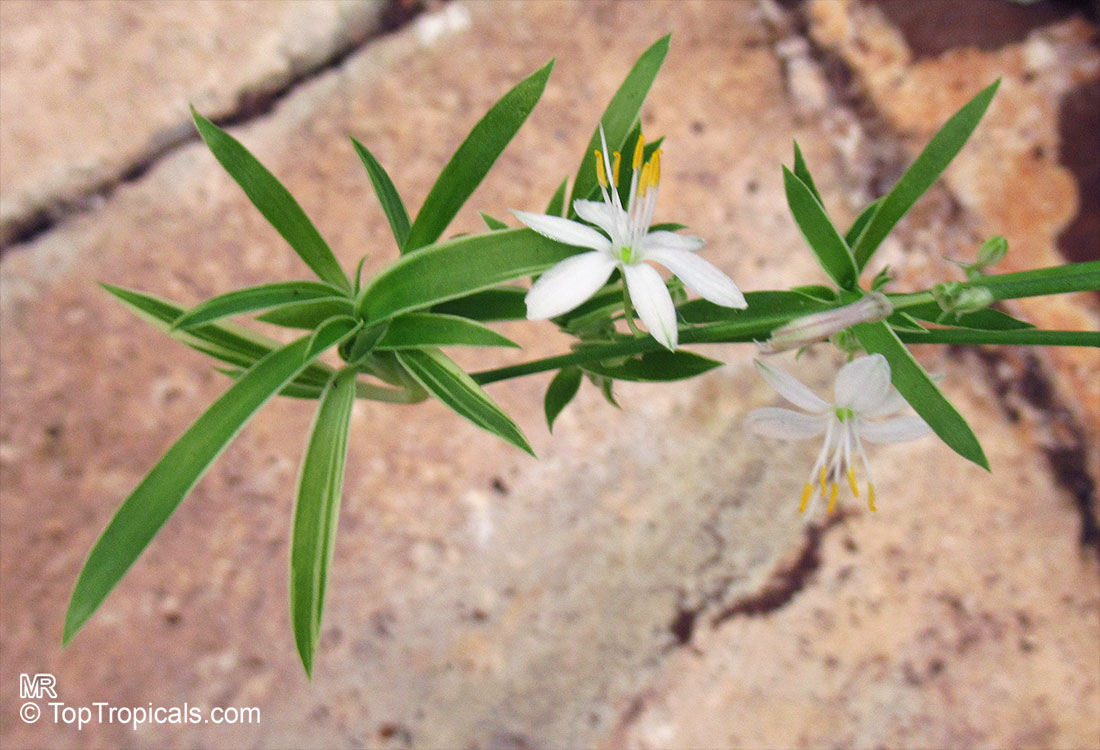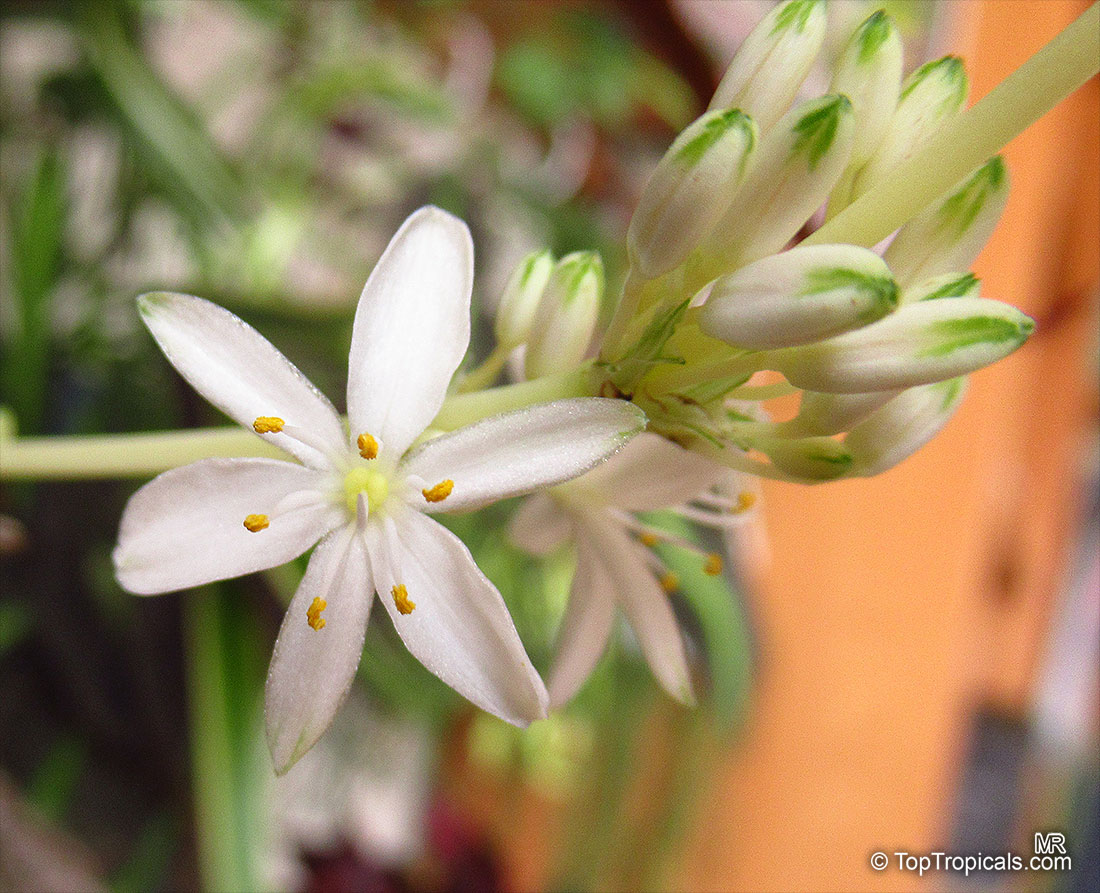Chlorophytum sp. (Spider Plant)
Top Tropicals Plant Encyclopedia
Botanical name: Chlorophytum sp.
Common name: Spider Plant
Family: Asparagaceae (Formerly:Anthericaceae)
Subfamily: Agavoideae





One of the most popular of all houseplant. The leaves are linear, 8-16 in long. Small white flowers are borne along outward arching wiry stalks. After blooming and fruiting, little tufts of leaves - baby spider plants - develop on the stalks. These little "spiders" take root wherever they touch the ground. The roots and rhizomes of the spider plant are fleshy and thickened, and serve as water storage organs for dry periods. The wild species has green leaves, but most cultivars are variegated.
This is one plant that really tolerates neglect! Spider plant is one of the easiest house plants to maintain and will thrive in an air conditioned room or a humid greenhouse. Full sun, or shade - spider plant hangs in there. Forget to water it? It will forgive you.
This is one of the finest plants for hanging baskets. Placed in a bright window, a spider plant will grow into a fountain of gracefully arching stalks adorned with miniature versions of itself. Water regularly, and fertilize with a liquid plant food every two weeks during the summer. Withhold fertilizer, and water less frequently in winter.
Spider plants may develop brown leaf tips if the soil is kept too dry or becomes too salty from watering with hard water. Prevent this by watering with rain water; cure it by leaching the roots thoroughly and repotting.
Although it will survive in shady spots, spider plant does best in bright light. If you want maximum growth and production of flowers and little plantlets, keep your spider plant in a very bright window, or hang it outside on the porch.
In frostfree climates, it is used as a groundcover, in borders and as edging around beds, walkways and paths.
